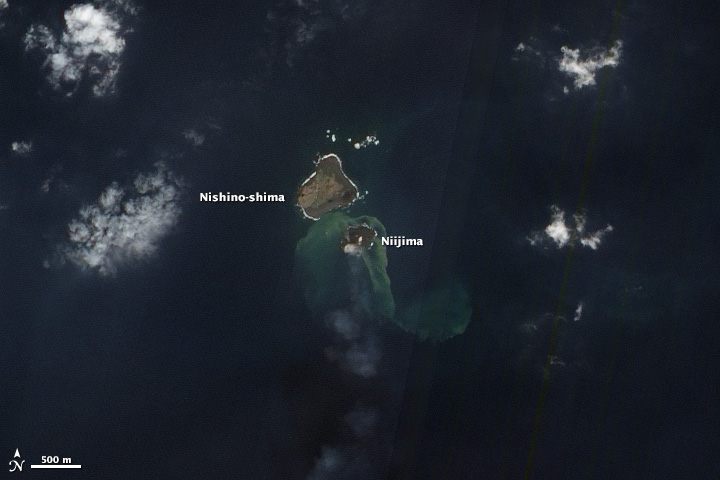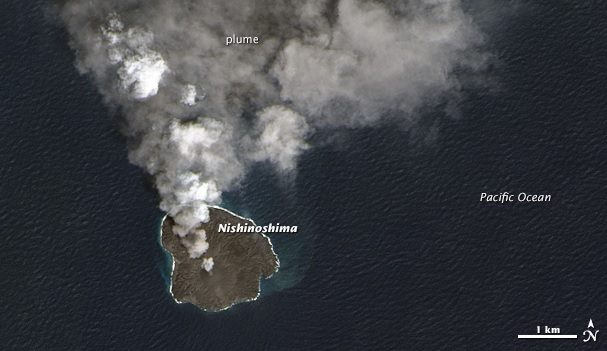Fleeting Wonders: This Japanese Island Ate Another Island

An eruption at Nishinoshima in October. (Photo: Japan Coast Guard)
In a rough real estate market, some geological formations have all the luck. Since it first surfaced in 2013, one volcano in Japan has multiplied its land holdings by 12, swallowing up a whole island in the process, Japan Today reports.
Its strategy? Blowing its top for two straight years. In 2013, Nishinoshima was a small, crescent-shaped island about 600 miles south of Tokyo. Then, that November, an underwater volcano began erupting, creating another tiny island nearby. Scientists named the newcomer Niijima, and watched its progress.


Niijima and Nishinoshima in 2013, just after Niijima emerged. (Photo: NASA/Public Domain)
Although volcanic growths of this size regularly disappear as quickly as they arrive, worn down by tides and erosion, this one lasted–and then some. By the end of 2013, thanks to continual eruptions, the once-tiny island had merged with Nishinoshima. By the end of 2014, it had completely overtaken the larger island.

Niijima merges with Nishinoshima. (Photo: NASA/Public Domain)
Now, after two years, the new Nishinoshima is nearly 1.5 miles square and over 300 feet tall. That makes it 12 times its original size–large enough to fit 600 Thanksgiving Day football games next to each other.
The volcano, which is still going strong, is now aboveground, spewing yellow-gray smoke and red-hot lava, which spreads and cools into yet more island. Scientists monitoring it say it the volcanic activity is likely to continue–until, presumably, another tiny island appears, and starts the seismic ouroboros all over again.

Nishinoshima in March 2015. (Photo: NASA/Public Domain)
Every day, we track down a fleeting wonder—something amazing that’s only happening right now. Have a tip for us? Tell us about it! Send your temporary miracles to cara@atlasobscura.com.

















Follow us on Twitter to get the latest on the world's hidden wonders.
Like us on Facebook to get the latest on the world's hidden wonders.
Follow us on Twitter Like us on Facebook